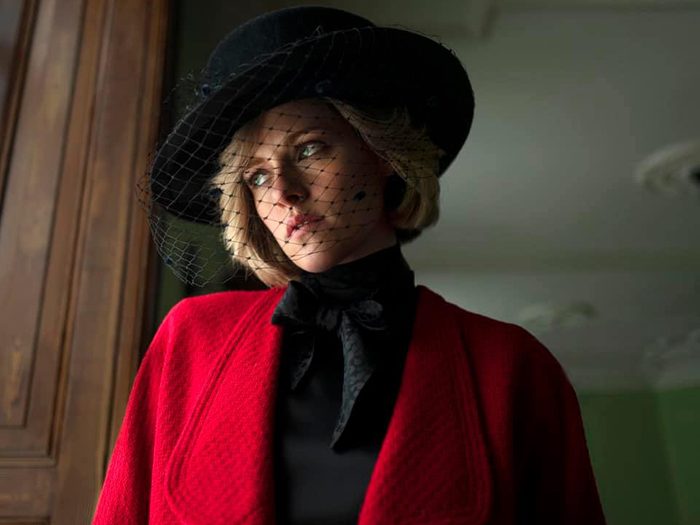
The Diana dilemma
The new film Spencer is attracting critical accolades—and controversy—for its portrayal of the late Diana, Princess of Wales. Actress Kristen Stewart, best-known for her role as Bella in the Twilight films, is earning Oscar buzz for her performance as Diana. Although Vanity Fair observes that “So much of Oscar success can be circumstantial,” for Stewart, “the circumstances might finally be right.”
A five-star review in the United Kingdom’s Daily Telegraph praised Spencer as an example of “thrillingly gutsy, seductive, uninhibited filmmaking,” but noted that “there is no risk whatsoever of [director] Pablo Larrain’s resplendently mad, sad and beautiful Spencer being mistaken for a historical fact.” When writing the screenplay for Spencer, screenwriter Steven Knight imagined a fictional holiday weekend at the Queen’s Sandringham estate in 1991 during the breakdown of Diana’s marriage to Prince Charles. Daily Telegraph film critic Robbie Collin wondered if Spencer would be the film to “break the curse,” as “the history of Princess Diana films is littered with flops and farragoes.”
Why is it so difficult to create a successful film—or play, novel or TV series—about Diana? Fictional portrayals of Diana often struggle to convey her real-life charisma while providing a fresh perspective on her life and death. The source material about her private life is itself full of contradictions. Diana famously worked with Andrew Morton on his controversial 1992 biography, Diana: Her True Story and subsequent biographers have scrutinized the veracity of some of her statements. The milestones of Diana’s public life, however, are so well known that many people can remember exactly where they were when Diana married Charles in 1981 or when the news broke that Diana had died in a car accident in 1997.
Pop culture portrayals of Diana, from the worst to the best, all have something to say about Diana that goes beyond her famous life and tragic death, examining wider issues from the influence of the tabloid press on celebrity culture to the future of the monarchy. Here, we take a look back at the most significant, and discuss why some Diana-themed movies, novels and plays flopped, while others managed to connect with audiences searching for an authentic take on the famous Princess.
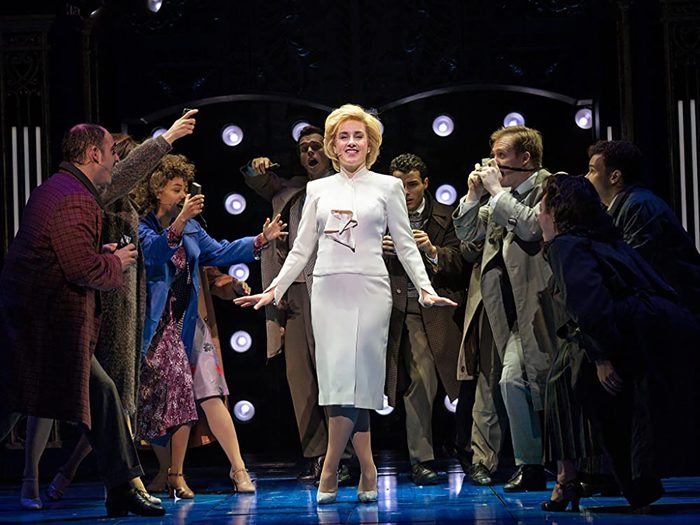
10. Diana, The Musical (2021)
A play with music and lyrics by David Bryan and Joe DiPietro
The life of a famous and controversial woman who died in her prime has inspired musical theatre before. Andrew Lloyd Webber transformed the life of Argentina’s First Lady Eva Peron into the 1978 musical Evita, with Madonna assuming the title role in a 1996 film adaptation. Diana’s life appeared to be perfectly suited for a similar tale of a charismatic young woman emerging from obscurity, marrying a famous man, connecting with the public, doing charity work, eclipsing her husband’s fame, then dying young. Diana, the Musical, however, did not enjoy Evita’s success.
Diana, The Musical was supposed to have its Broadway premiere in March 2020, but then COVID-19 struck. Determined to find an audience, the production was instead filmed in front of an empty auditorium and released on Netflix in October 2021. Audiences didn’t know what hit them.
The Guardian newspaper declared in a one-star review, “If it was deliberate satire, it would be genius, but it’s not.” Despite the incredulous reactions of both critics and audiences who assumed that a musical this bad must be a campy satire, lyricist Joe DiPietro defended the production in an interview with the BBC, stating “I never approached this as a campy show…To us, it’s really about an extraordinary and important woman of the last century who made a lasting impact.”
A clip widely shared on social media (with the comment, “I am reporting this to the international war crimes tribunal”) showed Jeanna de Waal as Diana at a classical music concert singing awkward rhymes such as “The Russian plays on and on/Like an endless telethon/How I wish that he were Elton John” before breaking into a bizarre dance sequence with Charles to the song “This is How Your People Dance.”
Believe it or not, Diana, The Musical is not the first fictional depiction of Charles and Diana’s marriage set to music. The music video for the 1983 song “Everyday I Write The Book” by Elvis Costello and The Attractions imagined the newly married Charles and Diana living a dull middle class life in which Charles desperately tries to impress his wife while a bored Diana watches silent movies on television.
Here are 40 things you didn’t know about Charles and Diana’s wedding.

9. Diana (2013)
A film directed by Oliver Hirschbiegel, written by Stephen Jeffreys
At first glance, the 2013 film Diana appeared to include the ingredients for commercial and critical success. Oscar nominated British actress Naomi Watts portrayed Diana and there were genuine efforts made to recreate Diana’s hairstyle and fashions. The screenplay was not another dramatization of the breakdown of the marriage of Charles and Diana (Charles is discussed but never appears in person). Instead, the film focused on Diana’s comparatively little-known affair with heart surgeon Dr. Hasnat Khan (Naveen Andrews) and his role in Diana’s life during her last years. The story was inspired by Kate Snell’s 2001 biography, Diana: Her Last Love.
When the film premiered, however, it received almost universally negative reviews from critics and audiences. Diana was depicted literally running after Khan in the street and the script contained ridiculous dialogue (“If you can’t smell the fragrance, don’t come into the garden of love”). Just 8 per cent of critics on Rotten Tomatoes gave the film a positive review.
Diana‘s failure had a lasting impact: eight years later, many actresses were reluctant to consider accepting the lead role in Spencer. Spencer screenwriter Stephen Knight explained to The Daily Telegraph, “We kept hearing that someone loved the part, but she was worried about what the response might be. There was a sense that ‘If even Naomi Watts couldn’t do it…’”
Despite the failure of the film, Diana’s affair with Dr. Khan served to inspire further fictional works. In Imagining Diana, a 2017 novel by Diane Clehane, Diana survives the 1997 car accident but is left disfigured, contemplating the impact of her new appearance on her status as the most photographed woman in the world. In the aftermath of the accident, she reconciles with Dr. Khan and later mentors her future daughter-in-law Catherine Middleton.
Don’t miss this photo gallery of young Princess Diana before she became a royal.
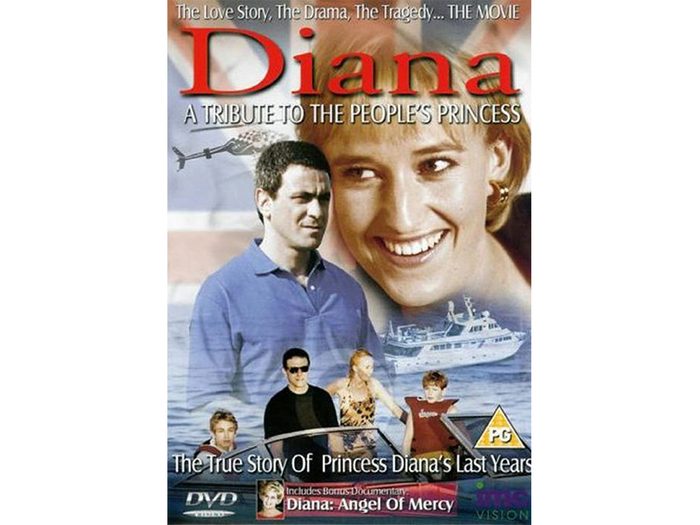
8. Diana: A Tribute to the People’s Princess (1998)
A TV movie written and directed by Gabrielle Beaumont
The global outpouring of grief following Diana’s death in 1997 spawned a new genre of Diana films: tribute pieces in which Diana was an innocent victim surrounded by unscrupulous people. Diana: A Tribute to the People’s Princess (released in the U.S. as Diana: The People’s Princess) was filmed quickly after Diana’s death, with Amy Seccombe in the lead role. The movie attempted to recreate the last year of her life, dramatizing well known moments and depicting her relationships with Hasnat Khan and then Dodi Fayed as well as her charity work, time spent with her sons and her struggle with paparazzi.
Critic Hal Erickson observed that the film was “seemingly dedicated to bestowing sainthood on Princess Di” and “manages to make her antagonists as unpleasant and unsympathetic as possible, with an inordinate amount of scorn heaped on Dodi [Fayed]’s former fiancée.” While a few audience reviews on the Internet Movie Database describe the film as “great” or “a fitting tribute,” most reviews are negative, summarizing it as “a pile of rubbish” and “a specimen of high camp in a TV film.”
There were other tributes to Diana in the form of both documentaries and fiction released in the months immediately following her death, and again around the 10th anniversary of her passing in 2007. One of the more notable anniversary productions was TLC’s Diana: Last Days of a Princess, which included more historical source material and insights from those who knew Diana. Starring Genevieve O’Reilly in the role of Diana, the scripted scenes with actors delivering fictional dialogue were interspersed with news footage and interviews.
In light of what we now know of Diana and her relationships in those final years, these glowing tribute films appear dated.
Take a look back at 10 of the most memorable royal tours of Canada.
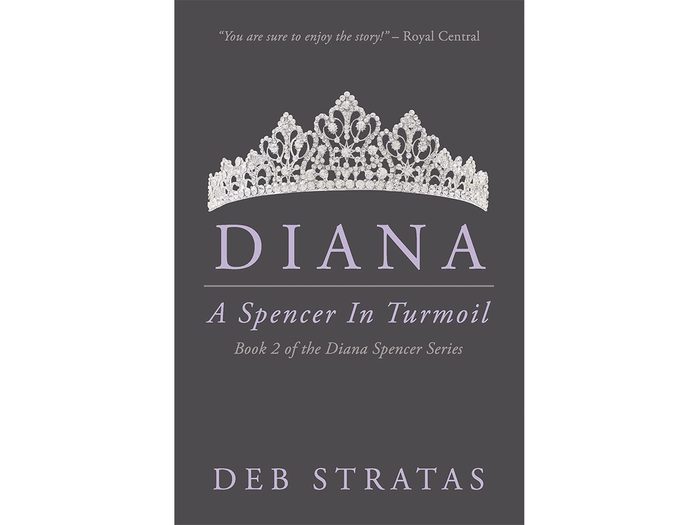
7. Diana: A Spencer in Love, Diana: A Spencer in Turmoil and Diana: A Spencer Forever (2018)
A trilogy of novels written by Deb Stratas
Pop culture portrayals of Diana that follow a traditional biographical format, giving equal weight to all the events of her adult life, are rare—and rarely well reviewed. This trilogy of biographical novels by Ontario author Deb Stratas proves the exception to the rule, and has found a fan base amongst royal history enthusiasts and admirers of Diana with their positive tone and respect for historical accuracy.
Stratas’s novels stand out because she makes efforts to treat both Diana and Charles fairly, presenting them both as having good intentions at the start of their marriage. Her approach is that of both an admirer of Diana and a monarchist, writing, “I have really focused on the positive characteristics of everyone involved. I believe both Diana and Charles truly loved each other when they married, and this book is not intended to paint either one as either a villain or a victim.”
Despite the challenge of finding new perspectives on Diana to intrigue audiences already familiar with her story, more biographical novels about Diana and her marriage are scheduled for release in the coming year. In The People’s Princess, a novel by Flora Harding set for publication in 2022, a newly engaged Lady Diana Spencer finds comfort and solace by reading the diary of Queen Victoria’s cousin, Princess Charlotte of Wales, observing parallels with her own future as Princess of Wales.
Check out these little-known facts about Queen Victoria.
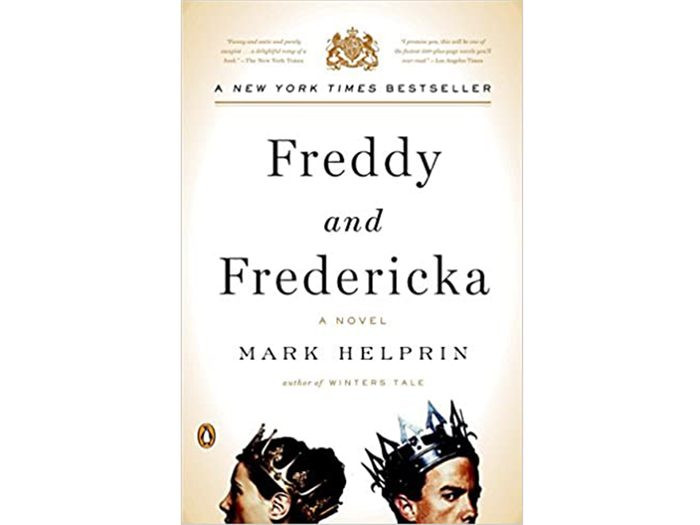
6. Freddy and Frederika (2005)
A novel written by Mark Halprin
One way to build suspense and dramatic momentum in a novel about Diana is to create an alternate history—a completely fictitious world in which Charles and Diana’s marital problems play out in a series of “what if…” scenarios. Mark Halprin’s satirical madcap adventure novel, Freddy and Frederika, imagines a royal couple, closely modeled on Charles and Diana, who are a public relations nightmare for the monarchy. To get them out of the United Kingdom, they are literally dropped from a plane into New Jersey on a secret mission to regain the American colonies for the United Kingdom.
As reviewer Sven Birkerts summarized in The New York Times, “During their yearlong sojourn they work for the Salvation Army, hop freights, serve as fire-watchers in the Western wilderness and, least probably, set themselves up as dentists in a small Nebraska town.” Reflecting the author’s conservative political views, these adventures allow the royal couple to learn the benefits of hard work and self reliance and even rediscover their feelings for one another in adversity. Critics of the time found the premise of the novel interesting and entertaining but noted that it was overlong with too many subplots and diversions into American politics.
There are other historical novels that imagine Charles and Diana living like commoners. In Sue Townsend’s 1992 novel and play, The Queen and I, which satirizes efforts to abolish the monarchy in the United Kingdom, the Queen has a nightmare in which the People’s Republican Party wins the 1992 general election. The House of Windsor is overthrown, and the former royal family is obliged to move into public housing. Charles and Diana proceed to have affairs with their neighbours while their sons view the move as a great adventure. These alternate history novels provide opportunities to not only satirize the monarchy and celebrity culture, but provide a new ending for readers who want to imagine how Diana’s life might have unfolded differently.
These rarely seen photos of Princess Diana are stunning.
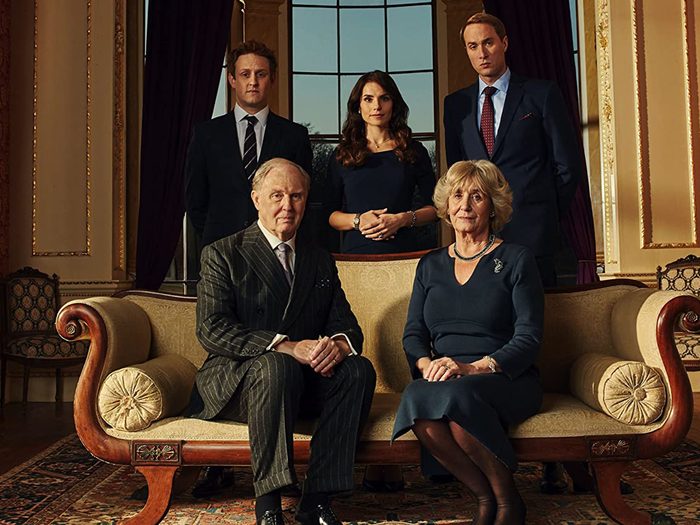
5. King Charles III (2014)
A play written by Mike Bartlett, later adapted into a 2017 film of the same name
What will be the impact of Diana’s legacy on the future of the monarchy? One way to explore this theme is to imagine her ghost haunting Buckingham Palace. In King Charles III, Bartlett imagines a time in the not-so-distant future when Queen Elizabeth II’s reign has come to an end. An elderly Prince Charles succeeds to the throne and faces a constitutional crisis. Late at night in his study, King Charles hears a ghost in the palace. “Mother?” he asks aloud, but instead, an eternally young and beautiful Diana appears and speaks the words, “You think I didn’t love you. It’s not true.” She later appears to her son Prince William to tell him, “Now be glad, you’ll be the greatest king we ever had.”
Bartlett was strongly influenced by Shakespearean history plays in which ghosts appear to their living friends and family members. Tim Pigott-Smith, who plays Charles in the 2017 film, compared the presence of Diana’s ghost to her enduring image in the popular imagination long after her death, stating in an interview with PBS Masterpiece, “I think there was a picture of Princess Diana in the paper every day for at least ten years after she died.” The play is a bit dated today as Prince Harry is depicted as a bachelor prince in the United Kingdom rather than married to Meghan in the United States, but Diana’s family is still coming to terms with her legacy and the ghost in King Charles III symbolizes her impact on Charles, her sons and the monarchy.
Diana’s ghost has made other appearances in British literature. In Ali Smith’s award-winning 2002 novel, Hotel World, Diana is described as a “historic and royal ghost, ghost of a rose.” Echoing Pigott-Smith’s observation, the novel identifies the role of the press in keeping Diana’s memory alive, referring to “the ghost of Diana, Princess of Wales…again today on the page of this morning’s Daily Mail, still selling its copies by breathing her back to a life that’s slightly more dated each time.”
Read about what happened on Charles and Diana’s honeymoon.

4. The Diana Tapes (2016)
A play written by James Clements
In the one-act play The Diana Tapes, Scottish actor and playwright James Clements explored how journalist Andrew Morton acquired the famous audio recordings from Diana that would provide the basis for his book, Diana: Her True Story. The play is structured as a thriller, switching back and forth between Morton’s office and Diana’s home as Diana records her perspective, and the cassette tapes are smuggled out of the palace.
The play debuted at the 2016 Edinburgh Playhouse, then toured New York, Providence Rhode Island and Toronto in 2017. In her review of the 2018 off-off-Broadway production, Rachel Abrams at New York theatre review site, Theatre is Easy, pronounced the play “an enjoyable evening,” but observed, “The inherent structural challenge with trying to make a thriller out of a history play is that we already know how the story ends.”
The Diana Tapes is not the first example of Andrew Morton’s biography of Diana inspiring a fictional portrayal of the Princess. There were two television movies released immediately after the publication of Morton’s book: Charles and Diana: Unhappily Ever After (1992), an ABC television movie in which Catherine Oxenberg (a real-life daughter of Princess Elisabeth of Yugoslavia and third cousin of Prince Charles), played the role of Diana; and Diana: Her True Story (1993), a SKY TV and NBC TV movie in which Diana was portrayed by British actress Serena Scott Thomas.
The numerous (fictional) depictions of the revelations in Morton’s book and how they came to published demonstrate the impact of Diana: Her True Story on popular perceptions of both Diana and the monarchy. The idea of a famous woman marrying into the royal family, then speaking to the public directly about their struggles continues to resonate as Meghan, the Duchess of Sussex, spoke to Oprah Winfrey in March 2021 about her own challenges behind palace doors.
Here’s what we can tell from Princess Diana’s body language in these iconic photos.
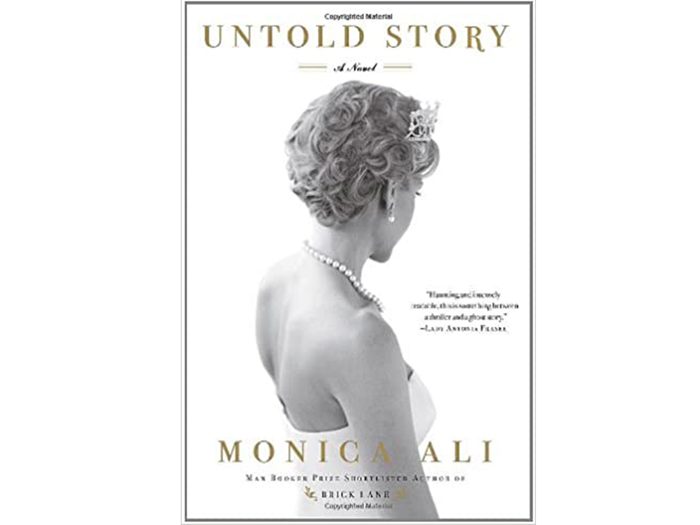
3. Untold Story (2011)
A novel written by Monica Ali
The death of Diana in 1997 was mourned around the world. The press and public contemplated what her impact might have been on her family and charities if she had survived the accident and lived into old age. There were novelists and filmmakers, however, who suggested that if Diana had survived, she might have considered starting a whole new life in obscurity, away from the paparazzi.
In Untold Story, Monica Ali, the Man Booker Prize winning author of Brick Lane, imagined that Diana survived the car accident only to fake her own death after a solitary swim off the coast of Brazil. In her new life as “Lydia,” Diana lives in a small American town where she dates an insurance claims adjuster, finds a group of supportive friends and follows the events of her sons’ lives from afar until a predatory photographer threatens to expose her secret life.
In an interview with NPR, Ali explained that she was inspired by press reports of Diana leaving the palace in a wig and sunglasses to go shopping or attend concerts, “I remember reading quite a lot about how Diana loved to go out in disguise in London, and she’d walk about delighted if nobody recognized her—basically on the principle that you wouldn’t find a princess walking down the streets on her own.”
Untold Story is not the only fictional portrayal of Diana that imagines her faking her own death to pursue a new life on the other side of the Atlantic. In 2005, Uruguayan media artist Martin Sastre directed a short film called Diana: The Rose Conspiracy, which imagined Diana going undercover to start a new life in a shanty town outside Montevideo.
Here are 10 fascinating facts about Princess Diana most people don’t know.

2. The Crown, Season 4 (2020)
A television series directed by Benjamin Caron, Paul Whittington, Julian Jarrold and Jessica Hobbs, written by Peter Morgan
Following the success of his 2006 film The Queen, Peter Morgan wrote the television series The Crown, examining Queen Elizabeth II’s life from her marriage to Prince Philip, Duke of Edinburgh in 1947 to the 21st century.
The most recent season of The Crown proved to be the most controversial because of its portrayal of the early years of the marriage of Charles and Diana. Although respected historian Robert Lacey is a consultant for the series, interviews with other historians noted the inaccuracies and changes to the timeline to make events that occurred months apart appear to happen around the same time for dramatic impact. What’s more, the British press reported that Charles’ friends were outraged by how he was portrayed in the series. Despite these controversies, Emma Corrin’s performance as the young Diana received widespread praise and she received the 2021 Golden Globe Award for Best Actress in a Television Series Drama. On Rotten Tomatoes, Season 4 of The Crown received the approval of 95% of critics.
Historical inaccuracy aside, Season 4 of The Crown played a key role in the revival of popular interest in Diana’s life and her role in royal history, to the extent of shifting the conversation from William and Harry and their respective families to the older generations of the royal family. The Windsors gained new fans—and new critics—as audiences pored over the events dramatized in the series, debating the authenticity of timelines and reliving key moments from Queen Elizabeth II’s reign and Charles and Diana’s marriage.
Season 5, debuting on Netflix after the real Queen’s Platinum Jubilee in 2022, will examine the breakdown of Charles and Diana’s marriage.
Here’s what The Crown gets wrong about the British royal family.
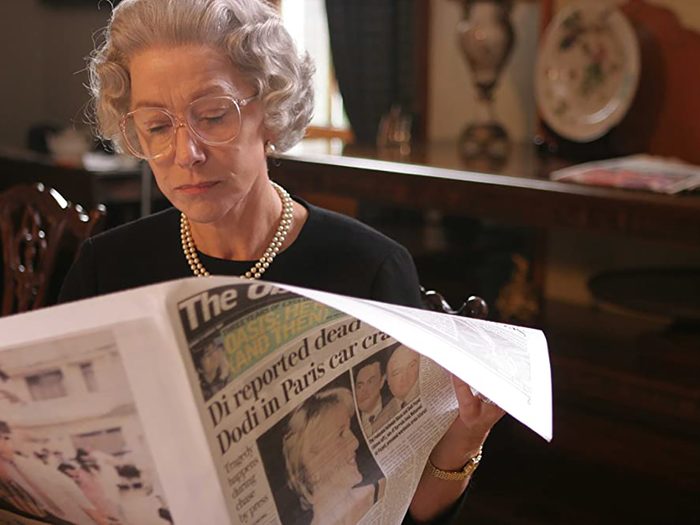
1. The Queen (2006)
A film directed by Stephen Frears, written by Peter Morgan
Perhaps the most compelling portrayal of Diana in pop culture is a film in which she barely appears at all. The Queen focuses on how Queen Elizabeth II (Helen Mirren, in an Oscar-winning performance), and the royal family as well as then-British Prime Minister Tony Blair (Michael Sheen) responded to the public outpouring of grief that followed Diana’s death. The film imagines the Queen at Balmoral Castle in Scotland watching reruns of Diana’s controversial 1995 BBC interview with Martin Bashir and contemplating what went wrong. Even after Diana’s death in the film, her life and legacy remain the focus of almost every conversation. Most of the scenes take place behind palace doors and the dialogue is therefore fictitious, but The New York Times observed, “In addition to reading and watching news clips and poring through royal biographies [screenwriter] Mr. Morgan interviewed many insiders from all the various royal and political camps.”
According to Rotten Tomatoes, 96 per cent of critics gave positive reviews of the film, noting its moments of humour and its subtle critique of both the monarchy and British class system. Ultimately, The Queen is one of the most successful portrayals of Diana because it focuses on her impact on both on the monarchy and the wider public rather than recreating the well-known moments of her life. It manages to capture the essence of that week in 1997 when the world was in mourning, and the public expected the royal family to show their emotions as openly as Diana had done in her lifetime.
Filmmakers are still exploring the impact of Diana’s death on the public. The 2017 television movie Diana and I imagined how four ordinary people in the United Kingdom responded to the death of Diana, viewing her struggles through the lens of their own circumstances.
Next, check out the 10 most controversial royal memoirs ever published.